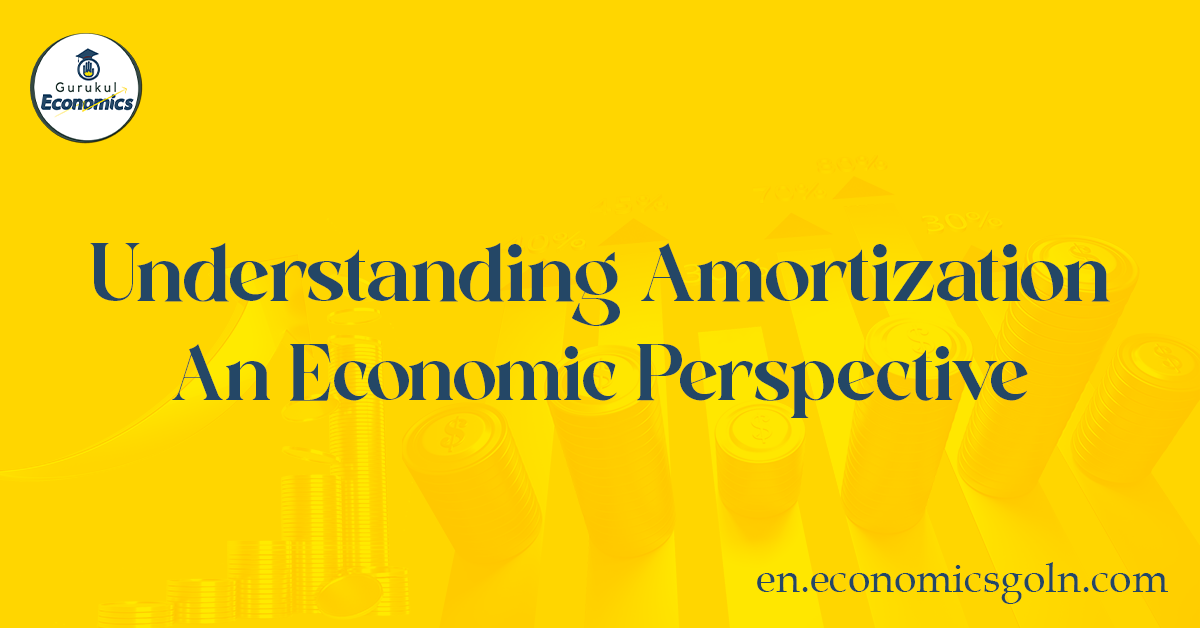Amortization is a fundamental concept in finance, accounting, and economics. It refers to the gradual reduction of a debt over a specific period through regular payments. While commonly associated with loans and mortgages, it also has broader applications in areas such as business assets.

Understanding Amortization
Understanding this concept is essential for both personal and business financial management. This article will delve deep into the concept of amortization, its different types, implications, calculation, and its role in economics.
The Concept of Amortization:
Amortization originates from the French term ‘amortir,’ which translates to ‘kill,’ ‘extinguish,’ or ‘wear out.’ In financial and economic contexts, it represents the process of slowly ‘killing’ or ‘extinguishing’ an outstanding debt or the value of an intangible asset over a defined timeframe.
Typically, each payment made towards a loan or mortgage includes portions that cater to both the principal and the interest. Over time, this process decreases the outstanding debt to zero by the end of the payment term. Similarly, businesses use amortization to reduce the value of intangible assets, like patents or trademarks, reflecting their consumption, expiry, or obsolescence over time.

Types of Amortization:
There are two primary types of amortization: financial amortization and business amortization.
Financial Amortization:
In personal finance or corporate finance, amortization usually refers to the systematic reduction of loan or mortgage balances. It involves paying off debt with a fixed repayment schedule in regular installments over time. The largest percentage of the initial payments goes towards interest, but as the principal decreases, the interest portion of each payment decreases, while the amount applied to the principal increases. This method of repayment provides predictability, allowing borrowers to budget their future income against the known debt obligations.
Business Amortization:
In the context of business, amortization often refers to the depreciation of intangible assets. As these assets provide value over time, their worth is gradually written off over their useful life. For instance, if a company buys a patent for $1 million expected to last 10 years, it would amortize $100,000 each year. This method allows the company to spread out the cost of the asset over the period it’s expected to benefit the business.

Calculating Amortization:
The calculation of amortization involves determining the amount to pay in each period (usually monthly) over the loan term or asset’s useful life. The amortization payment consists of the principal repayment and interest, which can be calculated using an amortization formula or an amortization table (often used in practice).
The standard formula for calculating the amortization payment (A) is:
A = P[r(1 + r)^n] / [(1 + r)^n – 1]
Where:
- P is the principal loan amount
- r is the monthly interest rate (annual interest rate divided by 12)
- n is the number of payments (loan term in years times 12)
However, it’s important to note that actual calculation can get more complex when dealing with varying interest rates, fees, and other nuances.

Implications of Amortization:
Tax Implications:
The tax implications of amortization are notable because the IRS allows businesses to deduct certain amortizable expenses from their taxable income. This practice decreases the taxable income and consequently reduces the tax liability.
Credit Ratings and Borrowing Capacity:
Amortization can also influence an individual’s or a business’s credit rating. Consistent adherence to an amortization schedule demonstrates creditworthiness, which can enhance the borrower’s future borrowing capacity.
Financial Planning:
Amortization plays a significant role in financial planning. Understanding how much of a loan payment goes towards the principal versus interest can help create a more efficient repayment strategy. In the case of businesses, it can assist in balancing expenses and revenues over time.

Amortization in Economics:
The role of amortization in economics is substantial. In macroeconomics, amortization can impact the level of debt in an economy, and consequently, its economic stability. High levels of unamortized debt can lead to increased default risks and potentially trigger financial crises.
At the microeconomic level, amortization affects business investment decisions and consumer spending. By providing a structured method of paying off debts or spreading costs over time, it allows firms and individuals to undertake investments that might not be feasible if the total cost had to be paid upfront.
Amortization also contributes to the financial markets, particularly the bond and mortgage markets. Amortized loans form the backbone of various financial instruments, including mortgage-backed securities and collateralized debt obligations.

Amortization is a pervasive element in the realms of finance, accounting, and economics. It offers a structured approach to manage debt and allocate the cost of intangible assets over their useful life. While the concept might seem complex, understanding it is crucial for making informed decisions, be it buying a house, starting a business, or even managing national debt. By studying and employing this financial tool wisely, individuals, businesses, and economies can maintain financial health and stability.
See more:
